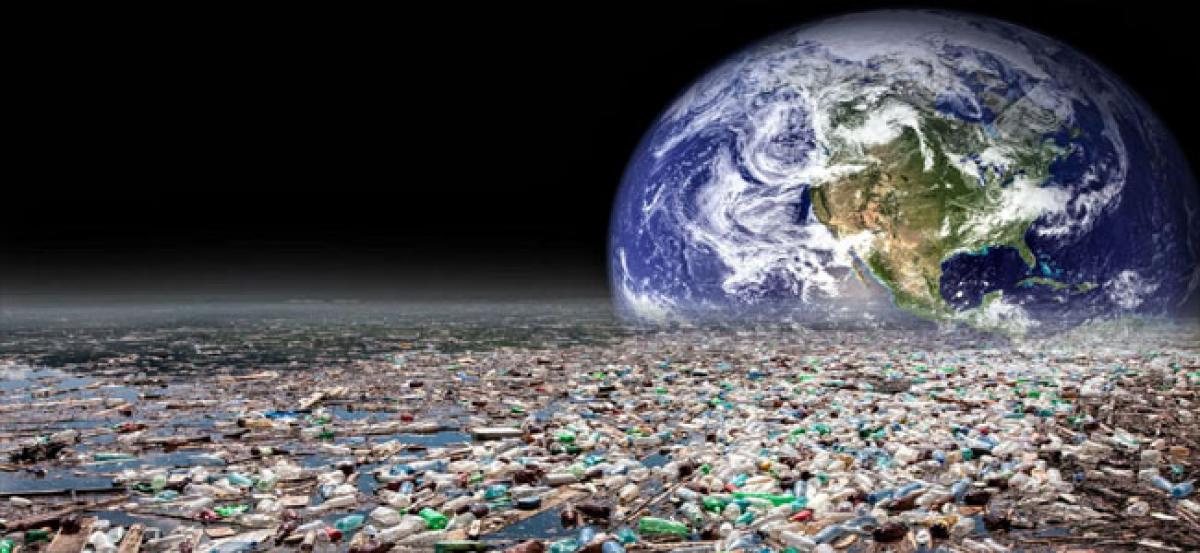Live
- Kartika Purnima celebrations fervour marks Telugu States, devotees flock to shiva shrines
- YSRCP alleges meagre fund allocations for Super Six schemes
- Telangana CM Reviews Plans for First Anniversary of State Government
- Vijayawada: Kindness Day celebrated
- Rajamahendravaram: Students advised to set clear goals
- Digital locker facility now available at Namma Metro stations
- Swarna Vaijayanthi Mala presented to Tirumala god
- Physical fitness mandatory for cops: SP Jagadeesh
- Children’s Day celebrated at Ananthalakshmi School
- AHUDA chief Varun gets grand welcome
Just In

Humans have created 8.3 billion metric tonnes of plastics since early 1950s, and most of it now resides in landfills or the natural environment, a study has found. Researchers, including those from the University of Georgia (UGA) in the US, found that by 2015, humans had generated 8.3 billion metric tonnes of plastics, 6.3 billion tonnes of which had already become waste.
Los Angeles : Humans have created 8.3 billion metric tonnes of plastics since early 1950s, and most of it now resides in landfills or the natural environment, a study has found. Researchers, including those from the University of Georgia (UGA) in the US, found that by 2015, humans had generated 8.3 billion metric tonnes of plastics, 6.3 billion tonnes of which had already become waste.
Of that total waste, only 9 per cent was recycled, 12 per cent was incinerated and 79 per cent accumulated in landfills or the natural environment, researchers said. If current trends continue, roughly 12 billion metric tonnes of plastic waste will be in landfills or the natural environment by 2050, they said.
"Most plastics do not biodegrade in any meaningful sense, so the plastic waste humans have generated could be with us for hundreds or even thousands of years," said Jenna Jambeck, associate professor of engineering at UGA.
"Our estimates underscore the need to think critically about the materials we use and our waste management practices," said Jambeck.
The scientists compiled production statistics for resins, fibres and additives from a variety of industry sources and synthesised them according to type and consuming sector.
Global production of plastics increased from 2 million metric tonnes in 1950 to over 400 million metric tonnes in 2015, according to the study published in the journal Science Advances, outgrowing most other human-made materials. Notable exceptions are materials that are used extensively in the construction sector, such as steel and cement.
However, while steel and cement are used primarily for construction, plastics' largest market is packaging, and most of those products are used once and discarded.
"Roughly half of all the steel we make goes into construction, so it will have decades of use - plastic is the opposite," said Roland Geyer, associate professor at University of California, Santa Barbara (UCSB). "Half of all plastics become waste after four or fewer years of use," said Geyer.

© 2024 Hyderabad Media House Limited/The Hans India. All rights reserved. Powered by hocalwire.com







